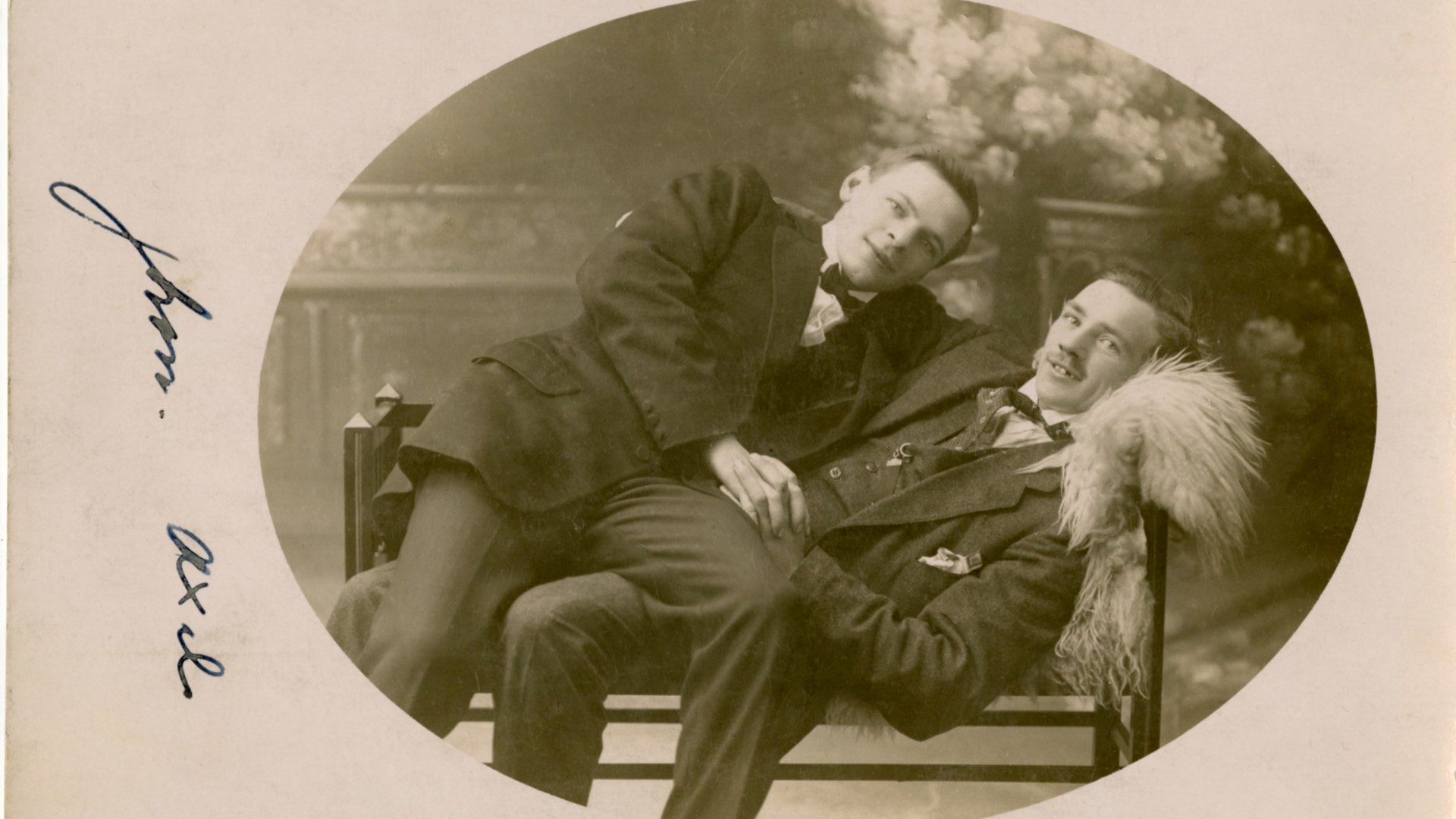HAMDEN, Conn. — Recent estimates say nearly 2 trillion photos are taken every year. Which works out to 5 billion a day or 57 thousand a second.
All around us, people record all the moments of their lives.
But it wasn’t so long ago, taking a photo was a more thoughtful process. Especially for LGBTQ+ people.
You know, the early years of photography, if you wanted your portrait taken, you went to a studio,” said Robert Young, a librarian at Quinnipiac University. “And actually, it wasn't until I believe, the Brownie Kodak camera came into popularity, I believe, in the 1890s, early 1890s, that amateur photography became popular.”
Young has collected old photographs since he was a teen.
“And I began noticing in, you know, a number of my photos, what we would say, would be images showing affection between that, you know, somebody with his someone on their arm around their shoulders, snuggling up heads, heads, touching, things like that. So I became interested in that type of imagery. And I started wondering, does this show LGBTQ history?”
That history has been examined by a number of different researchers. There's no way to be certain the people in the photos were anything more than good friends.
Many of the photos were taken by people with disposable income to afford cameras and film. However, a few collections exist of lesbians and people of color.
Barriers often existed. Once the photos were taken, then they had to be developed. That presented another challenge.
“A gay couple in Philadelphia in 1957, had a wedding ceremony, and they dropped the film off at a camera store,” said Young. “And when the pictures were developed, the owner of the camera store saw, of course, what the subject was, and refused to give the photos back to the couple. They said that the film had been ruined.”
A woman who worked in the camera shop kept the prints, When she died her children inherited these photos and gave them to an archive in Southern California. And they have been trying to figure out and find who these men were.
Homophobia was also at play when the people who documented their lives passed away, either due to age or AIDS in the 1980s and 1990s. Photos and home movies were simply thrown away by relatives wanting to hide the evidence of homosexuality.
A documentary Reel in the Closet, explores LGBTQ + home movies, going back to the 1940s of people living their lives, during a repressive time.
“The History Project in Boston has an incredible collection of Provincetown photos from the mid 20th century,” said Young. “And these were rescued literally from the curbside a lesbian, found photos, lying, you know, ready to go to the trash.”
One collection that survived, has particular interest to Young. The journey started with an eBay auction in 2010
“I mean, the first photographs in my collection of the 1950s couple, Roger and Frank, they're interesting, because they capture a wide swath of their lives, you know, holidays, vacations, gathering with friends, there isn't a lot of intimacy, or what we would probably consider intimacy in the photos.”
The photos had notes on the back with names and dates. Research lead Young to eventually find their names, Roger Pegram and Frank Bushong, and make connections with those still alive who knew them
“I’ve spent about 12 years now researching the men's lives, their friends lives, I've met family members, co workers, people that knew them.”
The couple split up in 1959, but remained close. Frank had a long career at Monsanto. His secretary there, with whom he was very close, read about Young and the photo collection. She got in touch and helped him to eventually meet Frank’s later partner Charles. Frank died in 1985.
Young said the photos belonged to Roger who died in 1999. He worked for a business research organization.
“The photos of Roger and Frank saying that the photos kind of give us another view of the 50s we kind of think of the 50s as being you know, suburbia, mom and dad, two kids and a dog, you know, but these photos provide a glimpse of gay life at that time, which is quite rare.”
Young is working on a book about the couple and hopes their lives continue to impact others.
“Whenever I share these photos, like on a Facebook group for LGBTQ history, or vintage photos of that are of interest to gay men, I get such a huge response, you know, from the community, you know, showing, you know, we we've always existed, we have we've been here. We've lived, we've had lives.”
Doug Stewart is the Senior Digital Content Producer at FOX61 News. He can be reached at dstewart@fox61.com.
Have a story idea or something on your mind you want to share? We want to hear from you! Email us at newstips@fox61.com
HERE ARE MORE WAYS TO GET FOX61 NEWS
Download the FOX61 News APP
iTunes: Click here to download
Google Play: Click here to download
Stream Live on ROKU: Add the channel from the ROKU store or by searching FOX61.
Steam Live on FIRE TV: Search ‘FOX61’ and click ‘Get’ to download.

